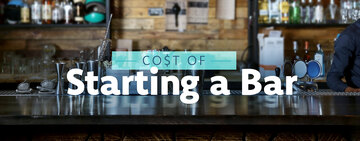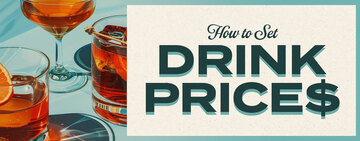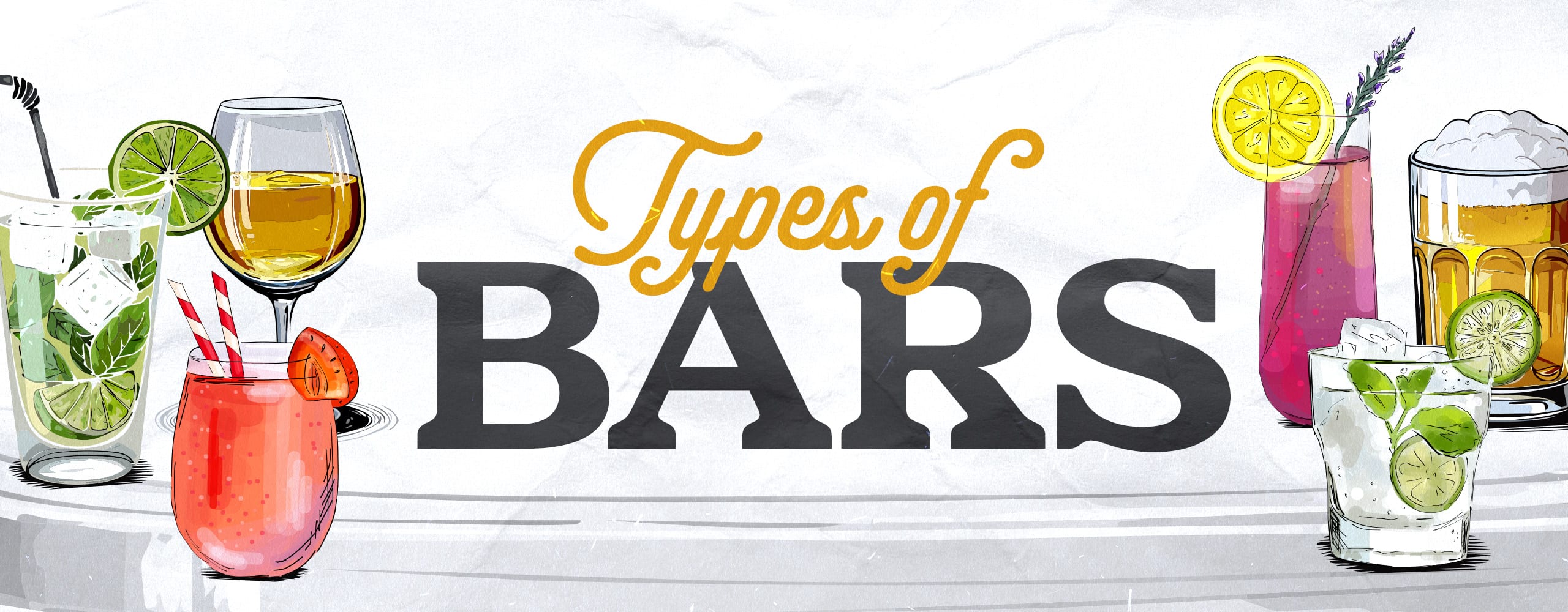
If you're considering opening a bar but finding it challenging to define your niche, understanding the various types of bars available can provide valuable insight. From classic establishments to modern and trendy concepts, the world of bars offers a diverse range of options for aspiring owners. When deciding on the type of bar to open and how to thrive in a competitive industry, consider your menu options, pricing strategy, ambiance, entertainment offerings, and the bar's location. By evaluating these key elements, you can make an informed decision that aligns with your vision and target market.
1. Cocktail Bar
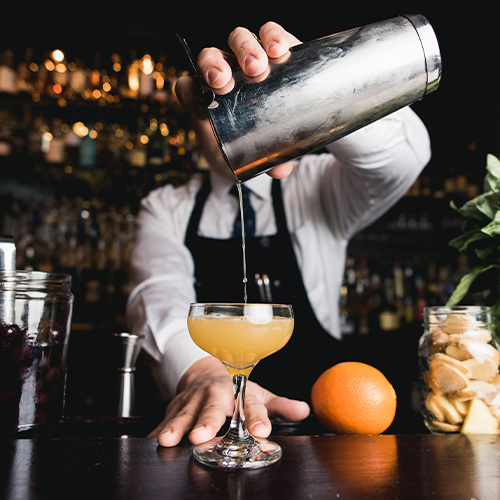
Cocktail bars specialize in the art of mixology, with a focus on expertly crafted drinks and impressive presentation. The drink list typically combines familiar classics with innovative signature cocktails, offering a selection of spirits that appeal to a wide range of tastes. To elevate the experience, cocktail bars are stocked with high-quality ingredients like fresh herbs, bitters, and premium spirits, ensuring every drink is crafted to perfection. While these bars usually don’t have a full kitchen, offering a charcuterie board menu or tapas can enhance the guest experience and complement the cocktails.
Cocktail bars are flexible in terms of atmosphere, ranging from relaxed, beachside tiki bars to intimate, word-of-mouth speakeasies or swanky rooftop venues, which provide the potential to cater to diverse crowds. While they can specialize in specific themes, it is key to prioritize the creation of a high-quality drink menu.
2. Sports Bar
A sports bar is a lively venue designed for casual and dedicated fans to gather and enjoy watching live sports events while enjoying food and drinks. The space should feature multiple large-screen TVs to allow patrons to watch games from any angle as well as plenty of bar and high-top seating for easy viewing. The atmosphere is energetic and social, with a focus on creating a community feel where people can root for their favorite teams together.
Sports bars offer a diverse array of draft beers, along with a selection of domestic and imported bottles and cans, classic cocktails, and sometimes even wines. Their menu focuses on easy-to-prepare items such as wings, nachos, burgers, and pizza, ideal for snacking while enjoying a game. To keep customers engaged throughout the year, sports bars often host daily specials and events like all-you-can-eat wing nights and trivia nights, enticing patrons to visit during the periods between major sporting events.
3. Dive Bar
Dive bars stand apart from more upscale bars primarily through their unpretentious atmosphere and simplicity. These establishments have a no-frills design with minimal decoration and a focus on providing quick, efficient service with little fanfare. The offerings are inexpensive, featuring basic beers, well-drinks, and shots, complemented by straightforward bar food. Dive bars cater to a loyal, local clientele, making them a community staple rather than a tourist destination.
Since the success of a dive bar hinges on its ability to draw in and retain loyal customers, its location and menu pricing are crucial. Ideal spots for opening a dive bar include neighborhoods, strip malls, college campuses, and other areas with heavy foot traffic. Offering a reasonably priced menu, happy hour specials, bucket deals, and entertainment options will entice customers to linger and return frequently. Enhance the atmosphere by installing pool tables, dart boards, or televisions to cultivate a fun and engaging setting that complements the bar's laid-back ambiance.
4. Pub/Tavern
A pub, short for "public house," originated in the UK, where it was historically a place for locals to gather for drinks, food, and conversation. In the U.S., the term "pub" has largely become interchangeable with "tavern," though traditionally, taverns often offered lodging in addition to food and drink. Today, American pubs continue this tradition, offering a welcoming space for patrons to enjoy hearty meals, craft beers, and classic cocktails in a comfortable setting.
Pubs typically offer a broader menu, with hearty, comfort food like fish and chips, burgers, and stews, making them more of a dining destination than a drinking-only spot. The drink list tends to feature a wide variety of beers, including local brews, ciders, and classic cocktails, with a focus on quality over complexity. They feature a warm, inviting environment with cozy seating, rustic decor, and sometimes live music or trivia nights to engage with the community.
5. Brewpubs/Beer Gardens
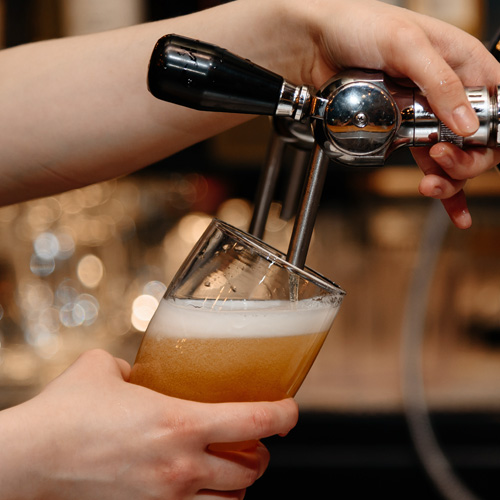
Brewpubs and beer gardens are ideal for those looking to tap into the growing craft beer scene, specializing in a wide selection of local and craft beers. A well-curated variety of beer types, ranging from light lagers to rich stouts, ensures there’s something for every taste. To make your brewpub or beer garden stand out, consider expanding the menu to include beer cocktails, gluten-free, and non-alcoholic choices to cater to a wider customer base.
These venues typically foster a casual, friendly atmosphere and can opt for a full or limited kitchen or a rotating lineup of food trucks. If space allows, you can further enhance the customer experience by adding live music, TVs for sports games, or even a family-friendly area with a playground to attract younger crowds. With the right combination of craft beer, an engaging atmosphere, and thoughtful amenities, a brewpub or beer garden can become a vibrant destination for both beer connoisseurs and casual patrons alike.
6. Rooftop Bar
A rooftop bar is an elevated drinking establishment located on the roof of a building, often found in urban areas. They offer panoramic views of the city or surrounding area and are popular spots for enjoying sunsets, happy hours, and hosting private events, where guests can socialize while taking in scenic views. Rooftop bars typically feature light, refreshing cocktails and a range of beverages, creating a casual to upscale vibe depending on the venue.
A rooftop bar's design prioritizes a welcoming and comfortable atmosphere for guests. It should offer ample lounge seating and enough tables to accommodate drinks and food service. For venues that host live entertainment, make sure to allocate space for performers and dancing. The bar can be designed as fully indoor, outdoor, or a blend of both. To maximize usage throughout the year, rooftop bars with outdoor spaces should incorporate features like patio heaters to prolong the bar's seasonality, allowing guests to enjoy the venue in cooler months.
7. Wine Bar
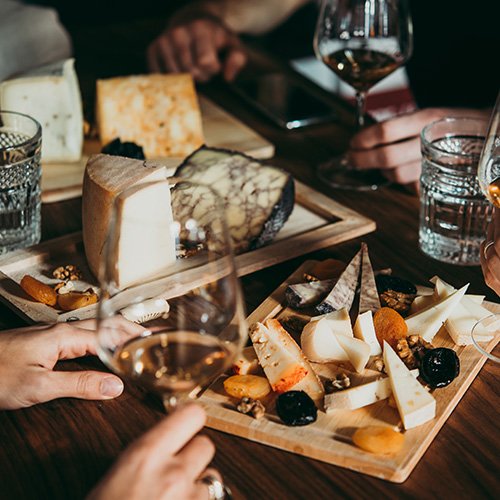
A wine bar is a casual, stylish establishment with a broad selection of wine, often paired with cheese or other small bites. They are typically located in urban areas or trendy neighborhoods, with an atmosphere ranging from cozy and rustic to sleek and modern depending on the wine varietals served. The menu has options for wine by the glass, wine flights for sampling, or wine cocktails like sangria and spritzes.
Compared to a tasting room, which is usually associated with a specific winery or vineyard and focuses on wine education and tasting, wine bars feature a broad selection of wines from different vineyards and growing regions.
8. Live Music Bar
Live music bars center around the experience of live performances, with the type of music shaping the atmosphere. These venues can range from casual spots featuring rotating cover bands with a stage and dance floor, to intimate cafes showcasing local acoustic talent, elegant piano bars offering a laid-back vibe, or cozy jazz bars with dim lighting that invite close connections.
While the music takes the spotlight, the bar itself should not be overlooked. Consider the layout to ensure performers are visible while patrons enjoy their drinks, and tailor your menu to suit the music. For high-energy, casual genres, a simple drink list may suffice, while more intimate settings may call for a curated selection of signature cocktails and quality spirits. The setting can be indoors or outdoors, but the focus should always be on creating an experience that complements the sound.
9. Nightclub
Nightclubs cater to an energetic crowd, with features like a large dance floor, prominent DJ booth, and dynamic, high-energy dance music. They can vary greatly in style, ranging from casual, dive-bar settings to upscale, exclusive venues. The atmosphere, location, and menu pricing will heavily influence the type of crowd and experience. Upscale nightclubs tend to offer a sophisticated environment with dress codes, VIP sections, bottle service, and performances by popular DJs. In contrast, more casual nightclubs often emphasize themed nights, local or underground artists, and a laid-back vibe to attract younger patrons.
To streamline service in such a fast-paced setting, establish a drink list of easy-to-make cocktails and large, shareable options like punch bowls to increase impulse buys and encourage socialization. While the main attraction is the entertainment, the bar's design should not be overlooked. A long bar ensures efficient service and allows bartenders to easily spot waiting customers, while the bar's positioning should be away from the dance floor but still within earshot of the music.
10. Hotel Bar
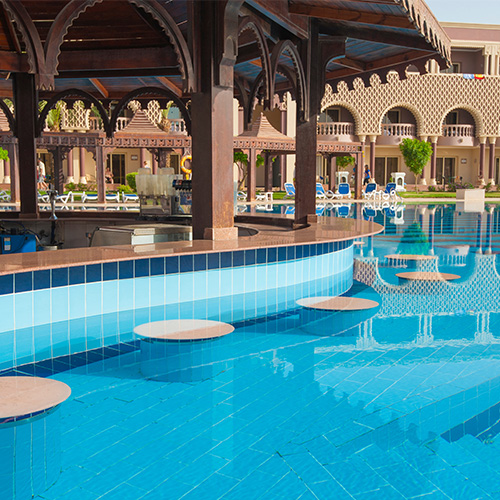
Hotel bars are a staple of upscale hospitality, offering an elegant and inviting space for both hotel guests and non-guests alike. These bars can be seamlessly integrated into hotel lobbies, set in a dedicated area of the property, or poolside, creating unique and appealing environments. Known for their polished aesthetics and refined atmosphere, hotel bars typically serve a mix of classic cocktails and signature drinks, providing an experience that aligns with the hotel’s brand. Their ability to cater to a diverse crowd, from travelers seeking a relaxing drink to locals enjoying a night out, makes hotel bars a profitable addition to any hotel type.
11. Specialty/Themed Bar
Specialty and themed bars offer a unique niche for bar owners looking to attract customers with a specific interest or passion. Specialty bars focus on a particular type of drink or experience, such as a whiskey bar that offers a curated selection of whiskeys from around the world, or a cigar bar that pairs fine cigars with spirits. These bars create a focused experience for enthusiasts and those looking to deepen their knowledge or appreciation of a specific category.
Themed bars revolve around a specific concept or motif, such as a historical period, popular movie, TV show, or even a holiday. Themed bars provide an immersive experience that captivates customers with novel decor, ambiance, and menu items tailored to the theme. Both specialty and themed bars capitalize on originality, appealing to customers seeking a new and unique experience that goes beyond the traditional bar atmosphere.
12. Mobile Bar
Mobile bars are a growing trend that combines convenience with versatility, making them an appealing option for entrepreneurs. Whether as a standalone operation or an extension of an existing brick-and-mortar bar, mobile bars and portable bars are perfect for catering events, from corporate happy hours to outdoor weddings, or even serving in food truck parks. The exterior design of your mobile bar is crucial, as it should reflect the vibe of your drink offerings and create an inviting atmosphere. Regardless of whether your menu focuses on craft beers, wines, or cocktails, it’s important to offer a curated selection that caters to both traditional tastes and adventurous drinkers.
13. Pop-Up Bar
Pop-up bars provide a unique opportunity for bar owners to craft unforgettable experiences that captivate customers. These temporary venues allow for the exploration of fresh concepts and innovative drink menus, offering a chance to experiment without the commitment of a permanent space. Ideally located in high-traffic areas for maximum visibility, pop-up bars draw customers in with the allure of a one-of-a-kind experience. From the visual design to the meticulously curated drink list, every element can be customized to create an immersive environment that appeals to guests in search of something new and exciting. Pop-up bars also serve as a financially savvy way to test ideas and generate buzz, laying the groundwork for a successful transition to a permanent venue.
14. Sober Bar
Sober bars, also known as nonalcoholic or zero-proof bars, are establishments that focus on offering a social experience without alcohol. These bars cater to sober and sober-curious individuals, mindful drinkers, or anyone looking for a unique night out without the effects of drinking. The drink offerings at sober bars include expertly crafted mocktails, alcohol-free beers, and artisanal sodas, often using high-quality ingredients and creative flavor profiles to provide a sophisticated alternative to traditional bar drinks.
As part of a growing trend, sober bars are typically found in urban cities and artsy neighborhoods where alternative lifestyles and wellness movements are popular. They are inclusive and focus on creating a welcoming space where patrons can enjoy lively conversation, live music, or open mic nights without the pressure to drink alcohol.
Bars play a vital role in the hospitality industry, catering to many demographics, from young people seeking trendy spots to families looking for a comfortable place to eat and drink. They vary in ambiance, from modern to nostalgic establishments, and some focus on drinks while others emphasize entertainment. By recognizing the unique characteristics and preferences of their clientele, bar owners can develop marketing campaigns that resonate with their target demographic and drive business success.



